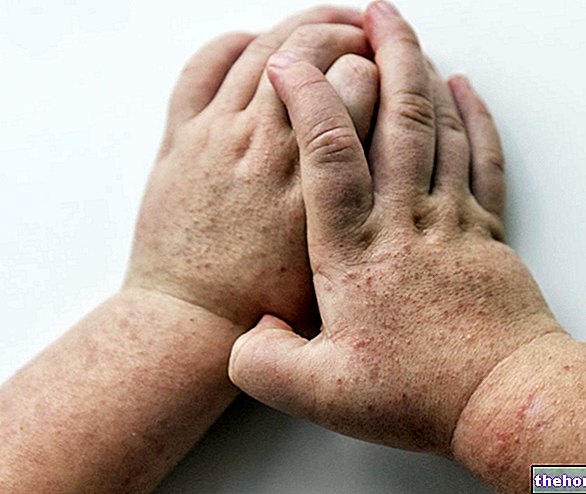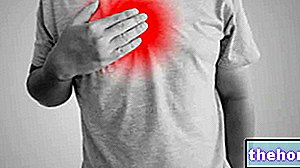Infection
The AH1N1 influenza virus spreads in the same way as seasonal influenza viruses, namely:- directly: through the respiratory and saliva droplets emitted with coughing and sneezing;
- indirectly: through hands that have come into contact with objects and surfaces contaminated by secretions of infected people (door handles, handrails, tables and benches, taps, sports equipment, etc.), and brought to the eyes, nose or mouth without first be washed.
Influenza viruses (including the AH1N1 influenza virus) live on surfaces for 24-48 hours; however, after just a few hours the infectivity of viral particles is significantly reduced, due to exposure to the external environment and to weathering.
People with flu, swine or not, are already contagious during the incubation period that precedes the onset of symptoms. The virus can be transmitted from one day before the onset of symptoms up to seven days after the onset of symptoms. On the other hand, children, especially younger ones, can remain contagious for longer. Readmission to community life is advisable after 48 hours, and in any case not earlier than 24 hours after the fever has disappeared (which must be independent of the intake of drugs to keep it low). This period, however, varies according to the clinical picture.
The influenza virus affects the mucosa of the upper respiratory tract and attacks the cells of the epithelium of the mucosa itself, inside which it penetrates undisturbed.
Once inside, it is divided into subunits ("pieces" of virus): this phase is called "eclipse", because at this moment the virus is not available in the circulation. Subsequently, it replicates, frees itself in the respiratory tree after breaking the cells that housed it, invades other cells, repeating the whole cycle and spreading the infection. As a result, large areas of the respiratory epithelium die, leaving a fragile and highly inflamed mucosa, which therefore begins to produce large amounts of mucus.
Symptoms
Influenza, including swine flu, begins after 1-3 days of incubation mostly abruptly (more rarely after 24-48 hours of general malaise and headache), with high fever (around 39 ° C), chills, sense of prostration, inappetence and refusal of food, intense headache, muscle and joint pain mainly in the back. Within a few hours, sneezing, rhinorrhea ("runny nose"), lacrimation and photophobia (intolerance to light), pharyngodynia are added (sore throat), burning sensation behind the breastbone, cough first dry and then with mucus Sometimes there is nausea, vomiting, abdominal pain and diarrhea The tongue may be numb.
Younger children are unable to describe the general symptoms, which can manifest themselves in them with irritability, crying, lack of appetite. In the infant, influenza is often accompanied by vomiting and diarrhea, and only exceptionally by fever. Very high fever, red eyes, conjunctivitis, laryngotracheitis and bronchitis are characteristic of influenza in preschool children (1-5 years).
In the elderly, the symptoms of swine flu can have different characteristics, given the presence of other intercurrent diseases, the weak immune response and the different perception of pain. which are, especially in the elderly, often sneaky, with low fever, inability to maintain posture, drowsiness, motor incoordination and incontinence of urine and feces. The other diseases present in the elderly can worsen the clinical picture, and cause metabolic decompensation of diabetes, heart failure, respiratory failure, etc.
An "analysis of over 600 cases of influenza A - H1N1 in the US showed that the most frequent symptoms were: fever (94% of cases), cough (92%) and sore throat (60%). In addition, 25 % of patients had gastrointestinal symptoms (diarrhea and / or vomiting) which is usually characteristic of the pediatric age, while in adulthood it varies from 6 to 10%.
The epidemiological data that were provided in June 2009 have however shown a lower presence of H1N1 influenza in the elderly population than in the seasonal one.
The course is short-lived: after 2-4 days the fever disappears, with sweating and remission of symptoms. The respiratory symptoms of swine flu can persist even for a long time (about 20 days); the persistence of the fever, on the other hand, must lead to suspicion of a complication.
After the remission of symptoms, convalescence follows, characterized by profound asthenia (tiredness, easy fatigue) and cough, which can last for 1-3 weeks.
See also: Nutrition, Medicinal Herbs and Flu
Other articles on "Swine Flu A / H1N1 Contagion and Symptoms"
- Swine flu: viral transmission and mutation
- Swine flu or A / H1N1 flu
- Swine Flu A / H1N1 complications
- Treatment and cure of swine flu A / H1N1
- Swine Flu A / H1N1 vaccination




























